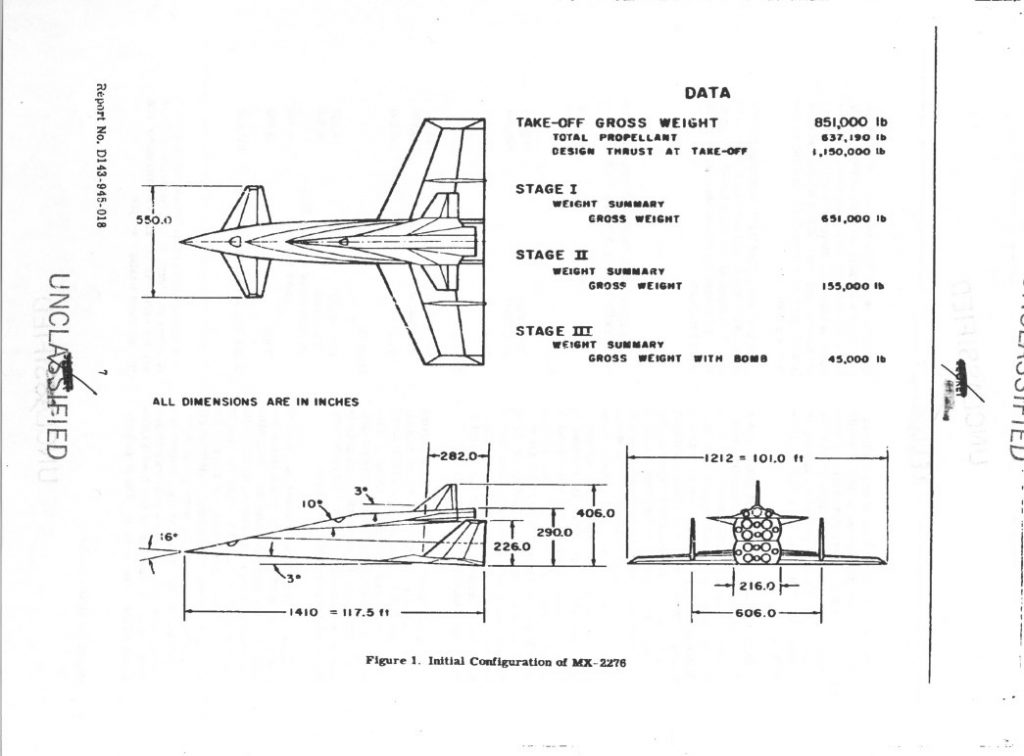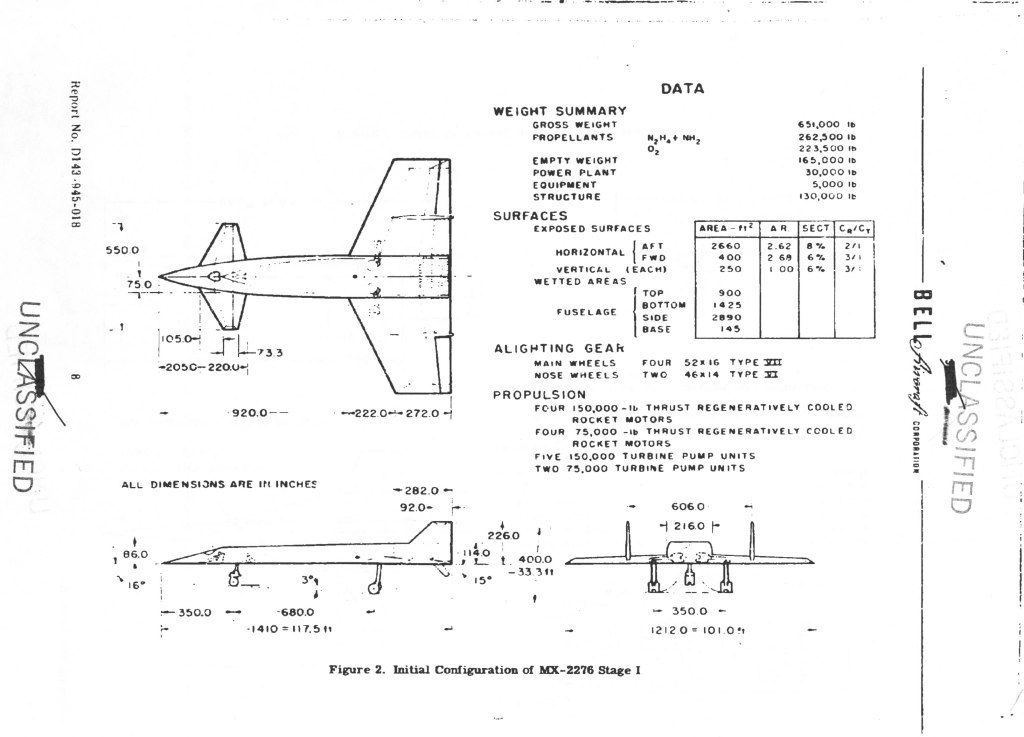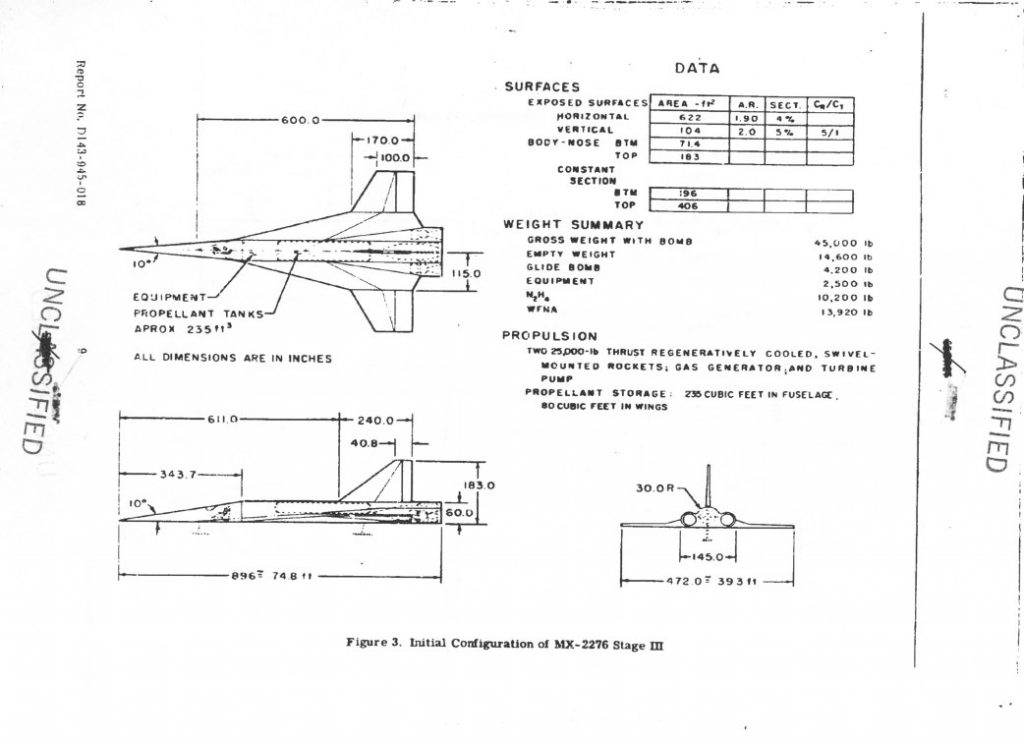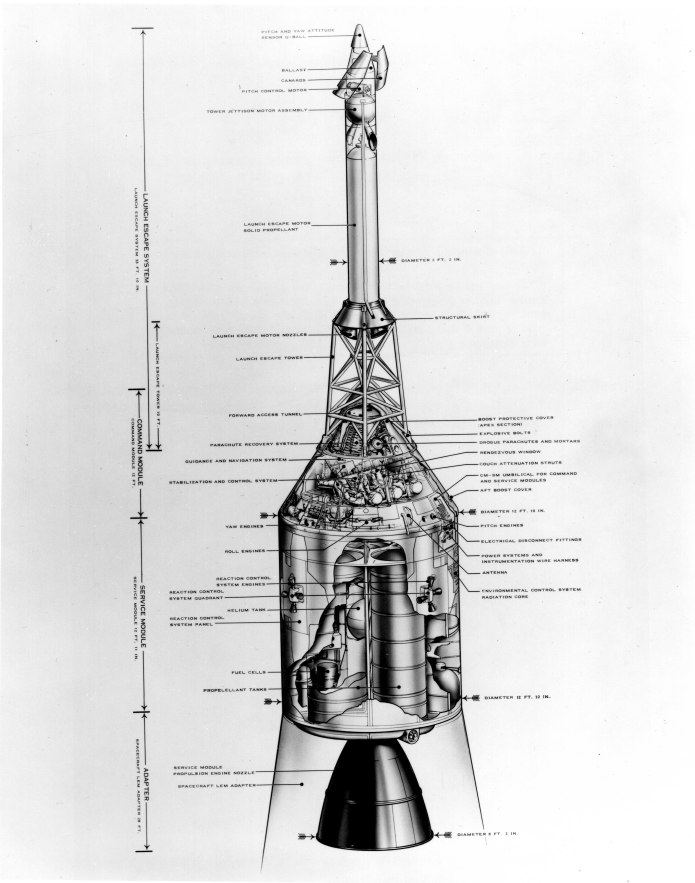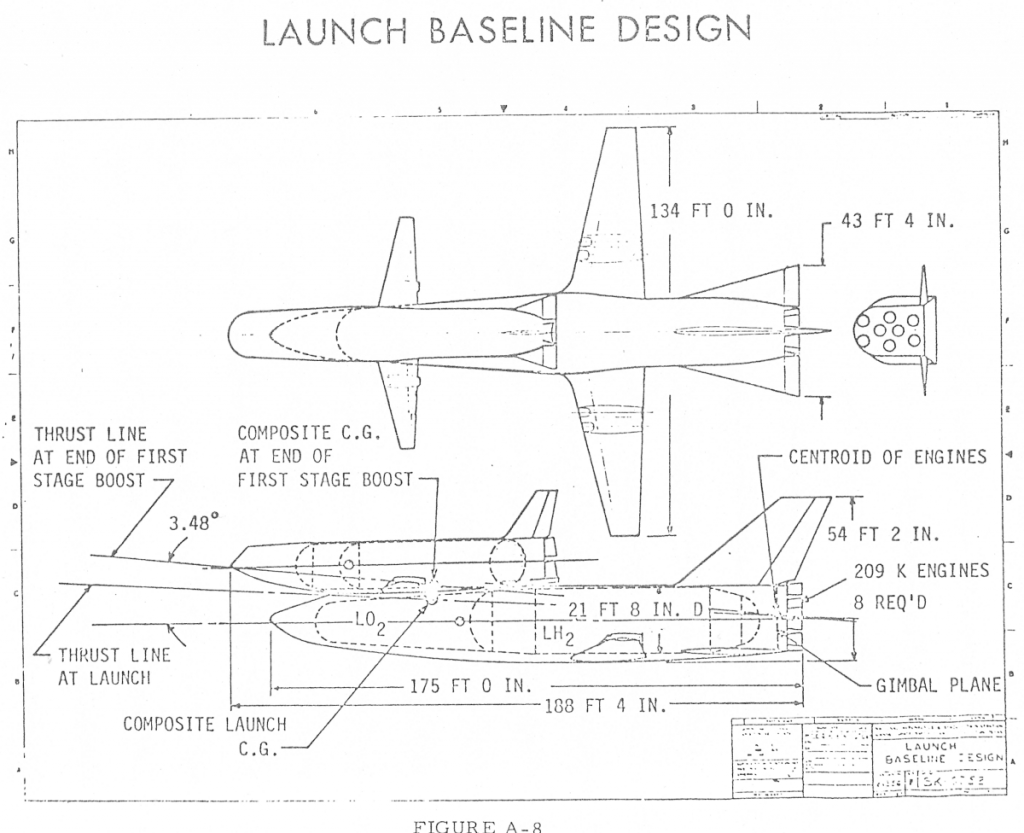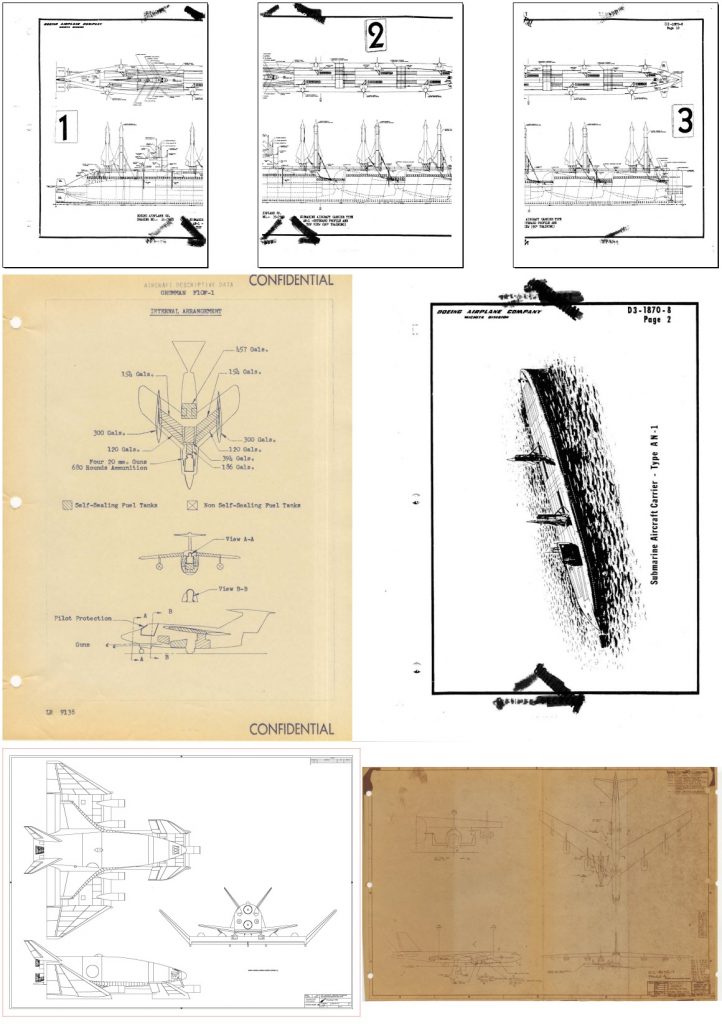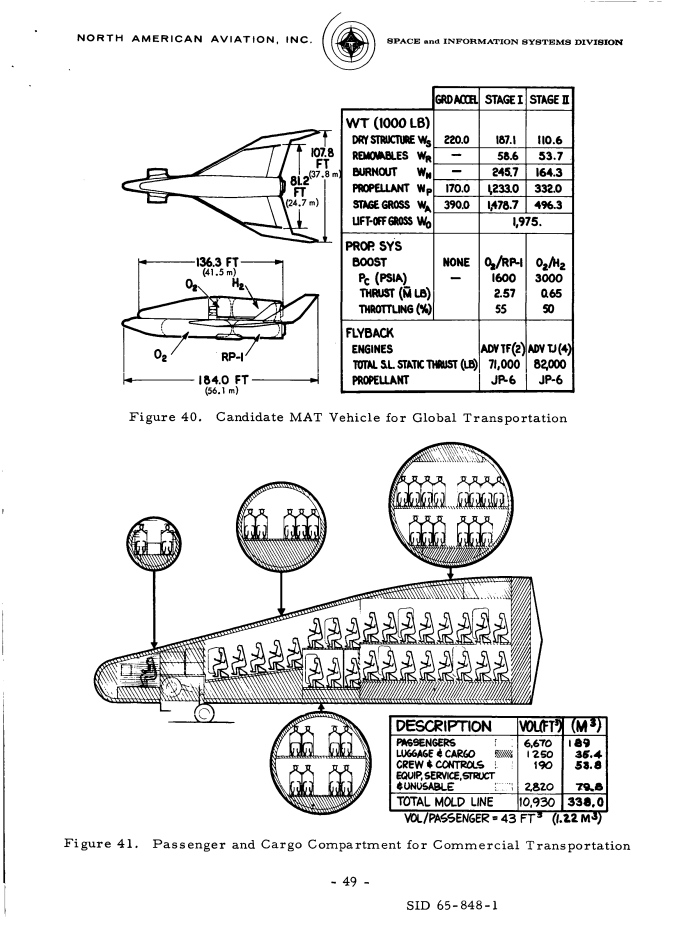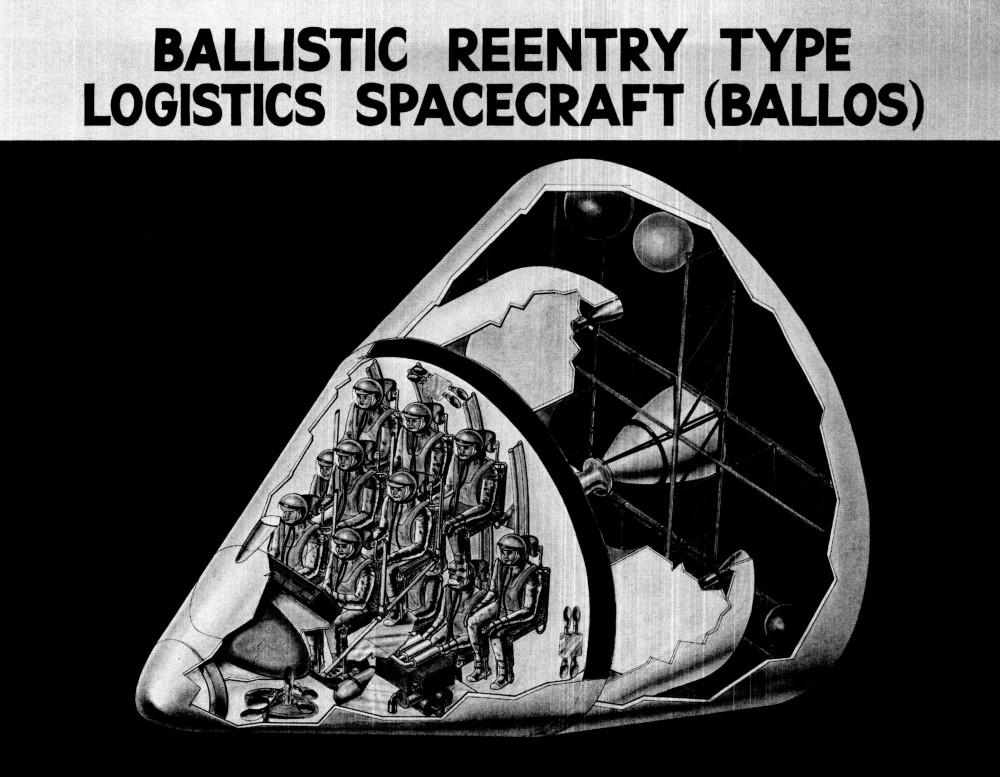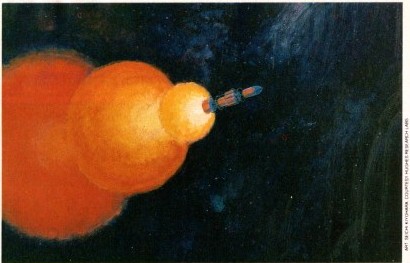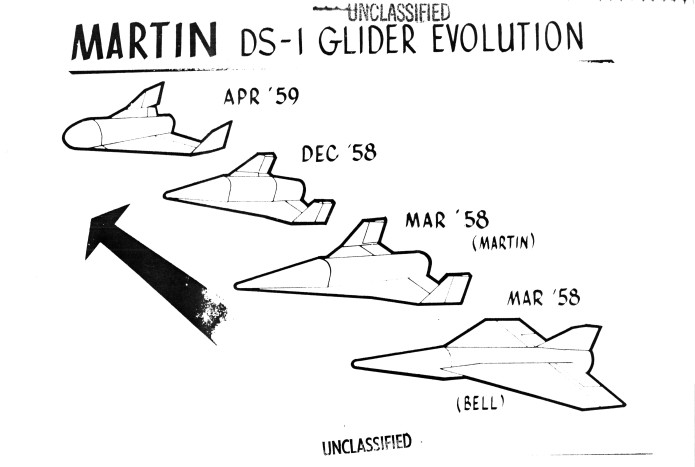Before the Convair Atlas ICBM proved that it was possible for a rocket to reach out across the world and deposit some canned sunlight reliably close to commie targets, it was understood that the only way to accomplish the task was with pilots and bombardiers. But by the mid 1950’s the idea of subsonic manned bombers sneaking into the heart of the Soviet Union without getting swatted was starting to seem nonsensical. So Bell Aircraft, under the direction of former V-2 program director Walter Dornberger, dreamed up the MX-2276: a three-stage manned rocket bomber. Looking akin to an evolved Sanger Antipodal Bomber, the MX-2276 used two manned and winged stages, with an unmanned expendable stage in between. The final stage would carry a single gliding nuclear warhead deep into the USSR, using the human crew to attain some measure of accuracy.
But then the Atlas came along and ruined all that.
The idea persisted, however, turning first into the Bomber Missile (BoMi) then the Rocket Bomber (RoBo) then Dyna Soar. With each step it became less fantastical, and also less of a dedicated weapon system; by the end of the Dyna Soar, it was a one-man experimental re-entry vehicle launched by a fully expendable Titan IIIC. Since then the idea of a “rocket bomber” has popped up from time to time, but never with the level of seriousness displayed in the mid/late 1950’s. For more on the whole BoMi program, see Aerospace projects Review issues V2N2, V2N3 and V2N4. APR issue V3N4 gives a pretty complete rundown of the final Model 2050E Dyna Soar.
Just in from ebay, a vintage black & white cutaway illustration of the Apollo CSM. The original has been scanned at 600 dpi (it’s clear enough for that high of a resolution) and made available to subscribers of the APR Patreon and the Monthly Historical Documents Program at above $10/month as an “extra.”
If this sort of thing is of interest, sign up either for the APR Patreon or the APR Monthly Historical Documents Program.
In 1969, Maxime Faget of NASA-Manned Spacecraft Center (later renamed Johnson Space Center) produced a concept for a simplified version of the Space Shuttles then being designed. The idea at the time was that the Shuttle would be a two-stage vehicle, both being fully reusable manned flyback vehicles. The Orbiter would be much larger than the Orbiter that actually got built because it included substantial hydrogen/oxygen tankage. The boosters were generally *vast* vehicles larger than the C-5 Galaxy meant to fly higher and faster than the X-15. Optimistic to be sure. Faget’s “DC-3” design had the same basic architecture but attempted to produce a smaller, cheaper, less complex and more realistic design. The design, produced in-house at NASA, was picked up by both North American and McDonnell Douglas, who designed their own variations on the theme.
Here is the basic configuration of the NASA-MSC “DC-3:”
A photo montage of Boeing display models showing a range of launch vehicles intended to put the early (1959) Dyna Soar into orbit. The three at left are clusters of Minuteman ICBM boosters; the next two are larger solid rocket motor clusters. The next is a Saturn I booster, followed by an all-new recoverable liquid rocket booster, the Titan II and the Atlas/Centaur. The Titan II design was chosen, though it could not actually get the Dyna Soar into a true orbit. To do that, solid rocket boosters needed to be strapped to the sides of the Titan II… leading to the creation of the Titan III.
I’m terrible at posting updates on the latest rewards, but I do get every rewards package out on time. That said, APR Patrons and Monthly Historical Documents Program subscribers have just been sent the rewards for April, 202. This package includes:
1) “Flying Carpet Feasibility Study Submarine Carrier,” a full scan of the 1958 Boeing report on a series of submarines design to carrying Mach3+ VTOL strike fighters
2) “F10F Descriptive Data,” a full scan of a 1953 Lockheed document describing this competitors design
3) Diagram 35-17610, B-52 airdrop carrier aircraft for the Model 844-2050 X-20 Dyna Soar
4) A CAD diagram of a two-stage Rockwell Trans Atmospheric Vehicle using a ground effect machine first stage
If this sort of thing is of interest and you’d like to get in on it and make sure you don’t miss any of the forthcoming releases, sign up either for the APR Patreon or the APR Monthly Historical Documents Program.
All prior “back issues” are available for purchase by subscribers.
In 1965 North American Aviation produced a study for NASA about reusable space launch vehicles to support forthcoming expected space stations. Included within that study was an alternate use of rocket vehicles… point-to-point hypersonic commercial passenger transportation. This concept goes back to the late 1940’s and has continued to the present day, with the Elon Musk suggesting that the SpaceX Starship could be used for that purpose. The idea is interesting and it certainly *could* work. But could it be commercially cost effective? History with craft such as the Concorde and the Shuttle argue strongly against an early vehicle like this doing anything but losing truckloads of cash every time it launches.
Artwork circa 1964 depicting the Lockheed BALlistic LOgistics Spacecraft (BALLOS), a sort of super-sized Apollo capsule meant for the transportation of a dozen astronauts (10 passengers, 2 crew) at once to and from any one of the doubtless dozens of space stations that the United States would surely have in orbit by the mid 1970’s. Launch vehicle would be a Saturn Ib.
A piece of art from Hughes Research Labs from the late 70’s depicting an Orion nuclear pulse vehicle in flight. Sadly low rez, but whatareyagonnado.
It’s an interesting piece, but it seems likely to be quite inaccurate. in deep space when the system operates in a pretty hard vacuum, the fireballs resulting from each blast would expand outwards at a speed of many hundreds or thousands of kilometers per second.

